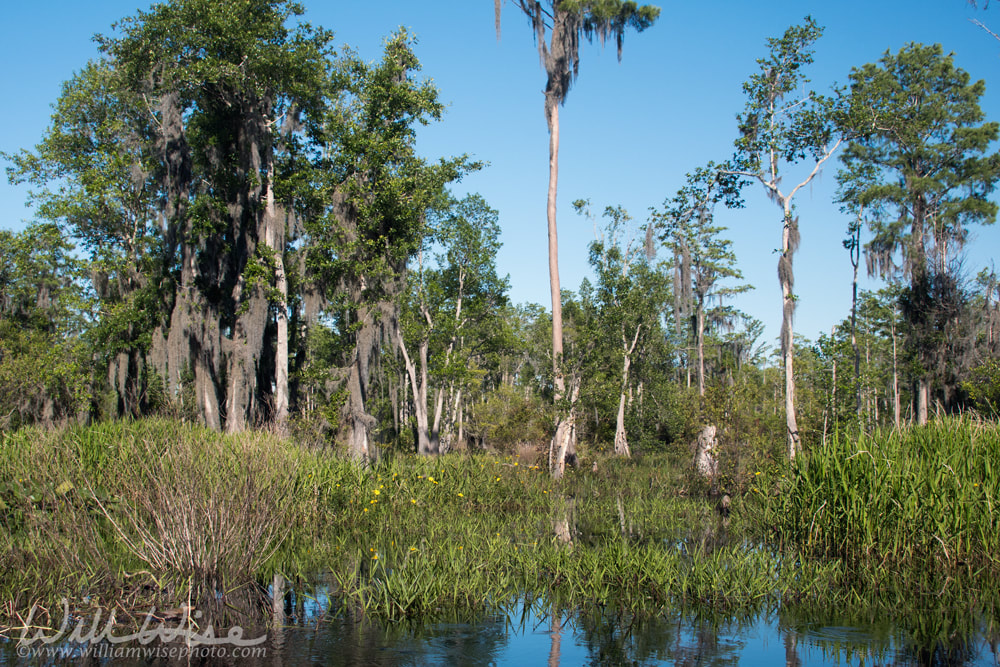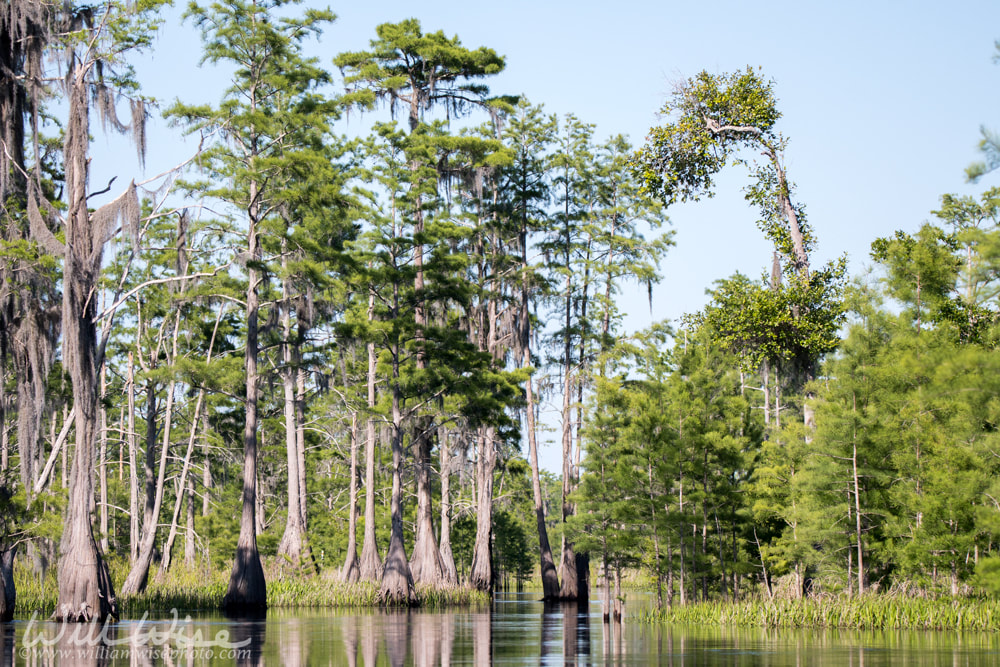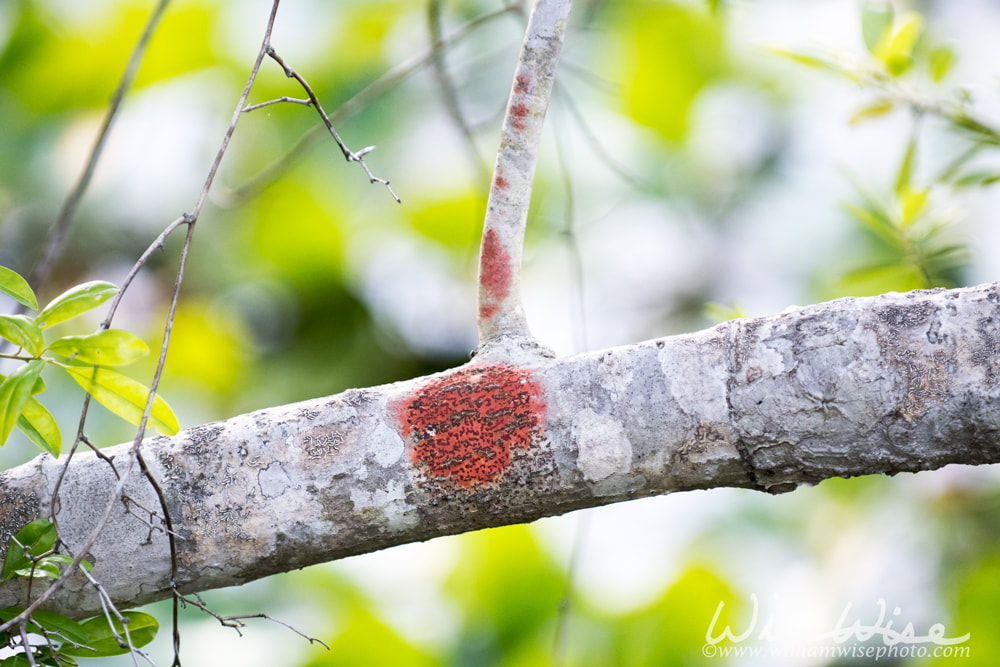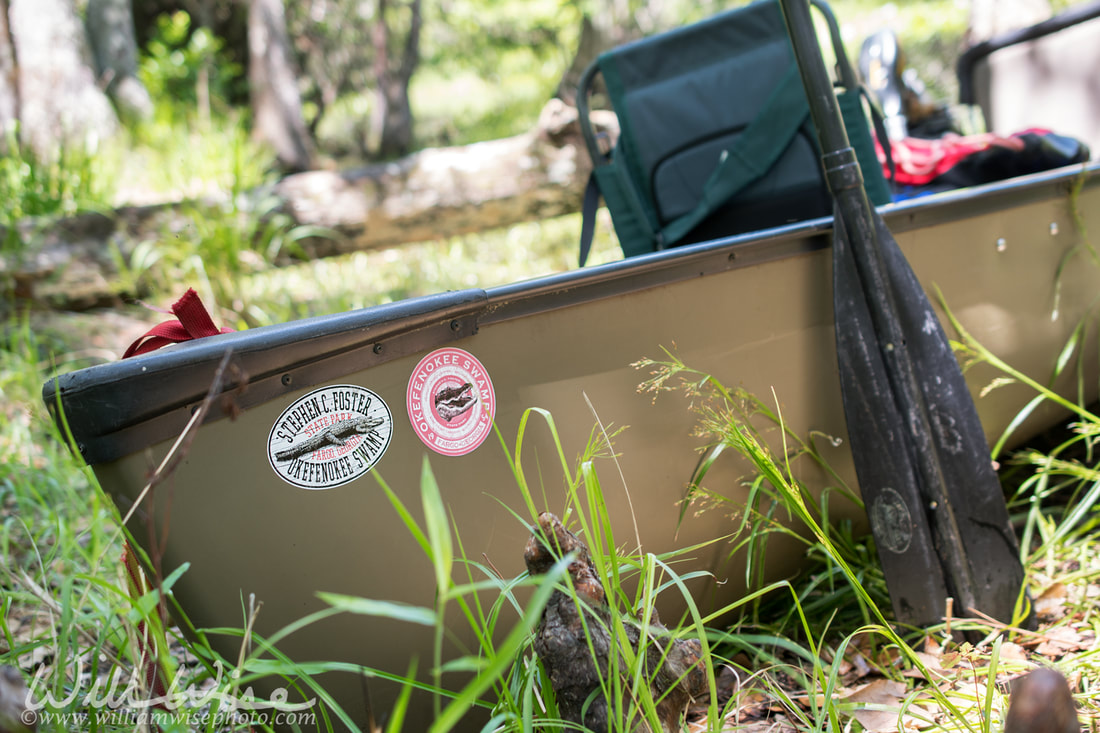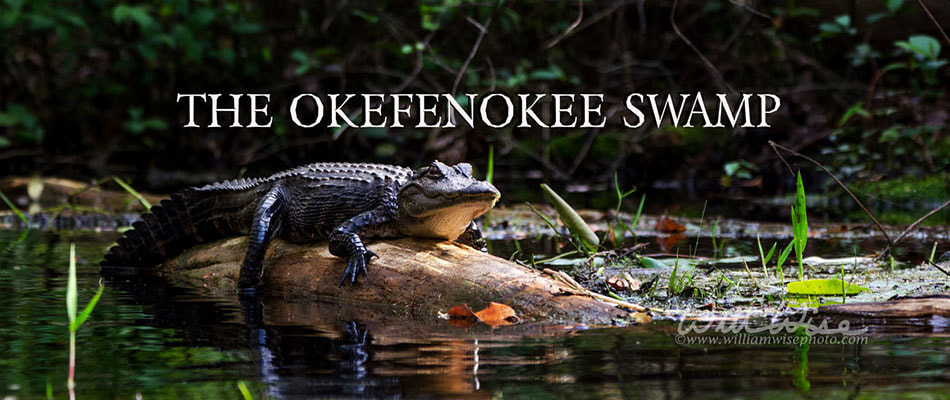 Okefenokee Photography by William Wise. A nature photo journal exploration of Georgia's Okefenokee Swamp, the Land of Trembling Earth, one of the largest blackwater swamps in North America. The alligators, birds, snakes and wildlife of Okefenokee National Wildlife Refuge and Stephen C Foster State Park. -- "What a wildly wonderful world, God! You made it all, with Wisdom at Your side, made earth overflow with your wonderful creations." Psalms 104 The Message "These floating islands present a very entertaining prospect; for although we behold an assemblage of the primary productions of nature only, yet the imagination seems to remain in suspence and doubt; as in order to enliven the delusion and form a most picturesque appearance, we see not only flowery plants, clumps of shrubs, old weather-beaten trees, hoary and barbed, with the long moss waving from their snags, but we also see them compleatly inhabited, and alive, with crocodiles, serpents, frogs, otters, crows, herons, curlews, jackdaws, &c. there seems, in short, nothing wanted but the appearance of a wigwam and a canoe to complete the scene." - Excerpt from William Bartram's Travels, Part II, Chapter III William Bartram was a botantist, artist, and nature writer that explored the southeastern United States around the time of the American Revolution (1773-1776). He was a Christian creationist and gave glory to the Author for all the wonderful works he observed and documented in his book, Travels Through North and South Carolina, Georgia, East and West Florida.
0 Comments
 Okefenokee Photography by William Wise. A nature photo journal exploration of Georgia's Okefenokee Swamp, the Land of Trembling Earth, one of the largest blackwater swamps in North America. The alligators, birds, snakes and wildlife of Okefenokee National Wildlife Refuge and Stephen C Foster State Park. -- "What a wildly wonderful world, God! You made it all, with Wisdom at Your side, made earth overflow with your wonderful creations." Psalms 104 The Message Excerpt from William Bartram's Travels, Part II, Chapter III:
William Bartram was a botantist, artist, and nature writer that explored the southeastern United States around the time of the American Revolution (1773-1776). He was a scientist, creationist and Christian that gave glory to the Author for all the wonderful works he observed and documented in his book, Travels Through North and South Carolina, Georgia, East and West Florida.  Okefenokee Photography by William Wise. A nature photo journal exploration of Georgia's Okefenokee Swamp, the Land of Trembling Earth, one of the largest blackwater swamps in North America. The alligators, birds, snakes and wildlife of Okefenokee National Wildlife Refuge and Stephen C Foster State Park. -- "What a wildly wonderful world, God! You made it all, with Wisdom at Your side, made earth overflow with your wonderful creations." Psalms 104 The Message Throughout the Okefenokee grows all manner of lichens and mosses. These scaly fungi add texture and color to the swamp scenery. However, the colorful blotches of lichen can cause confusion along the canoe and kayak trails. Some species of lichen are bright red, like the Pyrenula or Herpothallon (Christmas Lichen), and appear as if spray-painted upon the trees, possibly mistaken as trail blazes! Other lichen patches are white, like the blazes I’ve seen along the Appalachian Trail.  Okefenokee Photography by William Wise. A nature photo journal exploration of Georgia's Okefenokee Swamp, the Land of Trembling Earth, one of the largest blackwater swamps in North America. The alligators, birds, snakes and wildlife of Okefenokee National Wildlife Refuge and Stephen C Foster State Park. -- "What a wildly wonderful world, God! You made it all, with Wisdom at Your side, made earth overflow with your wonderful creations." Psalms 104 The Message 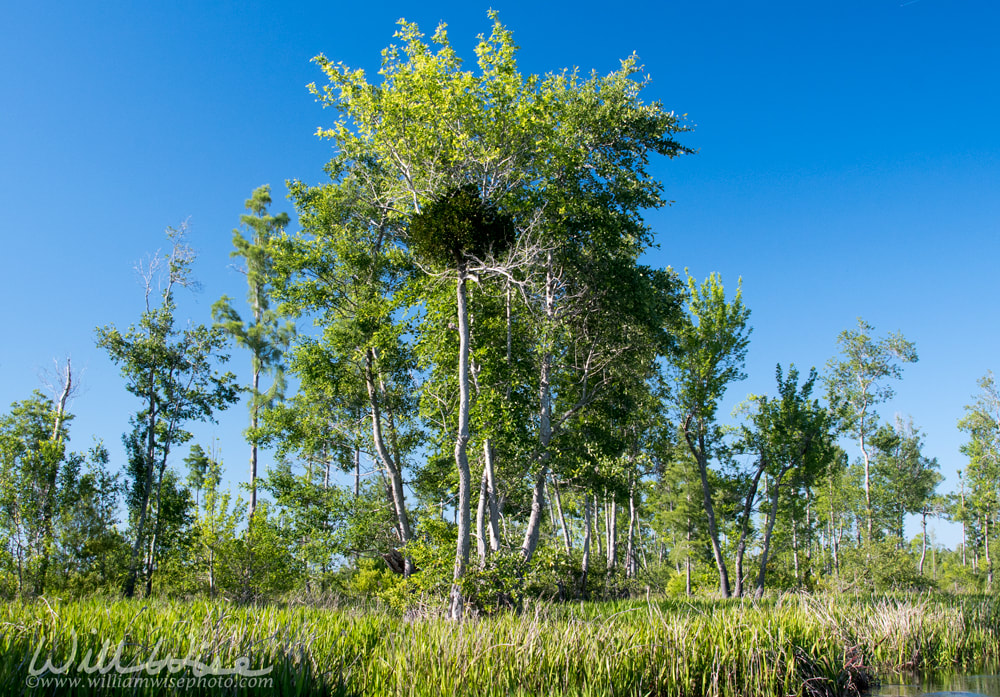 Oak Mistletoe, Phoradendron leucarpum, is a hemiparasitic plant native to the United States and Mexico that lives in the branches of trees. Mistletoe is used as a Christmas decoration. Photographed in the Okefenokee Swamp National Wildlife Refuge, Georgia. Mixon`s Hammock on Suwannee River. May 2020. A large clump of thick green leaves sits high in otherwise bare tree. The thick glossy leaves growing are completely unlike the normal foliage furled out by that tree in the spring. This makes Mistletoe easy to spot, especially in the winter. Its parasitic nature - stealing water and nutrients from its host – is what earned phoradendron (literally, tree thief) its scientific name. So what made a parasite become a Christmas decoration? Internet stories about, but the underlying theme is that mistletoe was hung in the house as an icon of good luck. The superstitious belief that it fosters love and friendship may have led to the tradition of kissing beneath the mistletoe. Each December, my coworker’s children collected mistletoe, tied a red ribbon around small bundles, and sold them to friends, family, coworkers and at Christmas craft fairs to have a bit of Christmas pocket cash. Since the clumps of mistletoe are often high within the trees, I had to inquire where his teenage boys learned how to climb so high. I was then schooled on how southerners in Georgia collected mistletoe: shoot it out of the tree with a shotgun! 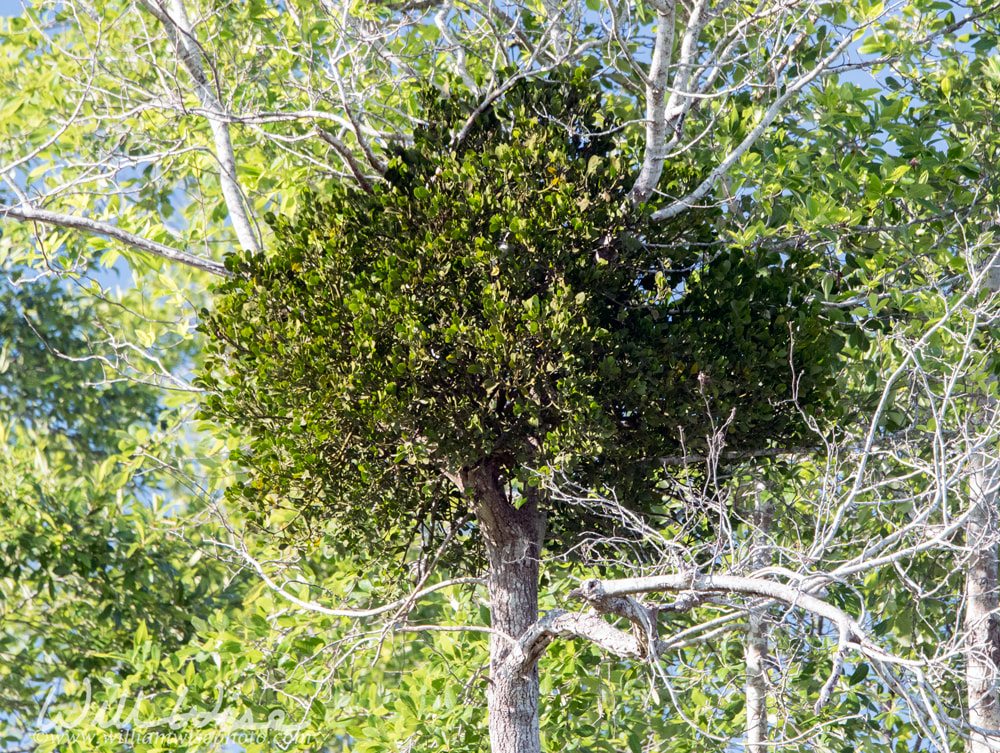 Oak Mistletoe, Phoradendron leucarpum, is a hemiparasitic plant native to the United States and Mexico that lives in the branches of trees. Mistletoe is used as a Christmas decoration. Photographed in the Okefenokee Swamp National Wildlife Refuge, Georgia. Mixon`s Hammock on Suwannee River. May 2020.  Okefenokee Photography by William Wise. A nature photo journal exploration of Georgia's Okefenokee Swamp, the Land of Trembling Earth, one of the largest blackwater swamps in North America. The alligators, birds, snakes and wildlife of Okefenokee National Wildlife Refuge and Stephen C Foster State Park. -- "What a wildly wonderful world, God! You made it all, with Wisdom at Your side, made earth overflow with your wonderful creations." Psalms 104 The Message 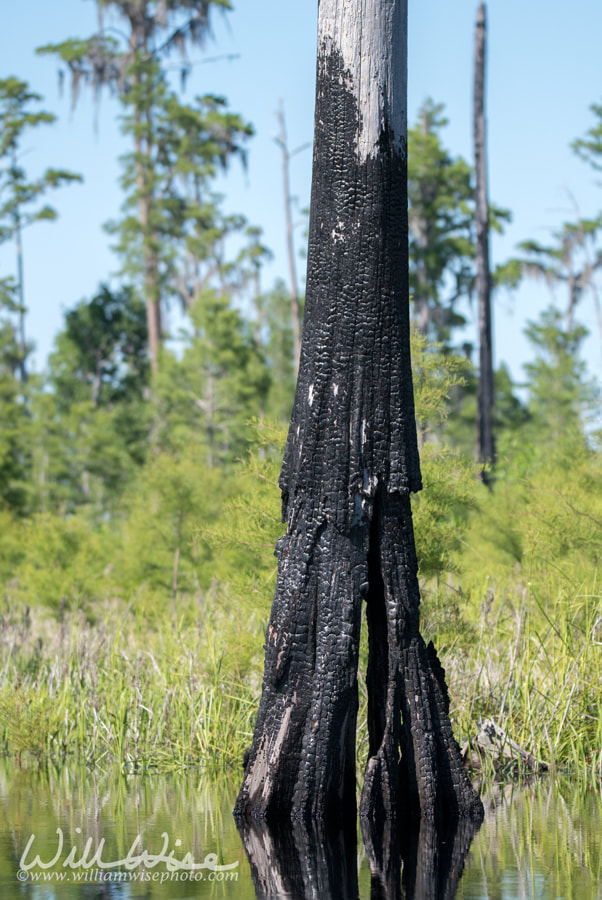 Burned cypress tree stump in the Okefenokee Swamp National Wildlife Refuge, Georgia. May, 2020. Fire is an important part of swamp habitat ecology. Okefenokee wildfires are typically caused by lightning strikes and burn thousands of acres of dry peat during drought. Fire sets back hardwood succession and keep open prairies. Long, hot summers… extended periods of drought… plenty of exposed organic peat material… and a random but well-placed lightning strike; all these ingredients cook up to make large fires. South Georgia, and especially the Okefenokee National Wildlife Refuge, face this imminent threat every year. Often, hundreds upon hundreds of square miles burn for several days at a time. But is fire bad? In reality, wildfires actually are what keep the Okefenokee Swamp a swamp. As the fires sweep the prairies of the refuge, the shrubs and young hardwoods are killed back. The large cypress and Long-leaf pines tolerate the flames and thus the characteristic open habitats of the Okefenokee remain. According to the Georgia Wildlife Federation, “Fire is a necessary part of the swamp ecosystem. When it burns the swamp, usual plant succession is interrupted, preventing swamp prairies from filling with cypresses, black gums, and bays and becoming Woodland.” Source: Georgia Wildlife: The Okefenokee Swamp, Georgia Wildlife, Volume 6, Number 1, from Georgia Wildlife Press; 1997. |
Categories
All
Archives
September 2025
|
|
All content is ©williamwisephoto.com. Please don't steal images. My images are available at dreamstime.com. Stock sales go into the shelter photography program.
|
In December 1993 I came to know the Designer and Creator of this wonderful planet and its creatures: Jesus Christ.
|
Donations help support the animal shelter adoption photography equipment and adoption website hosting and domain fees. Thanks for your support!
|
